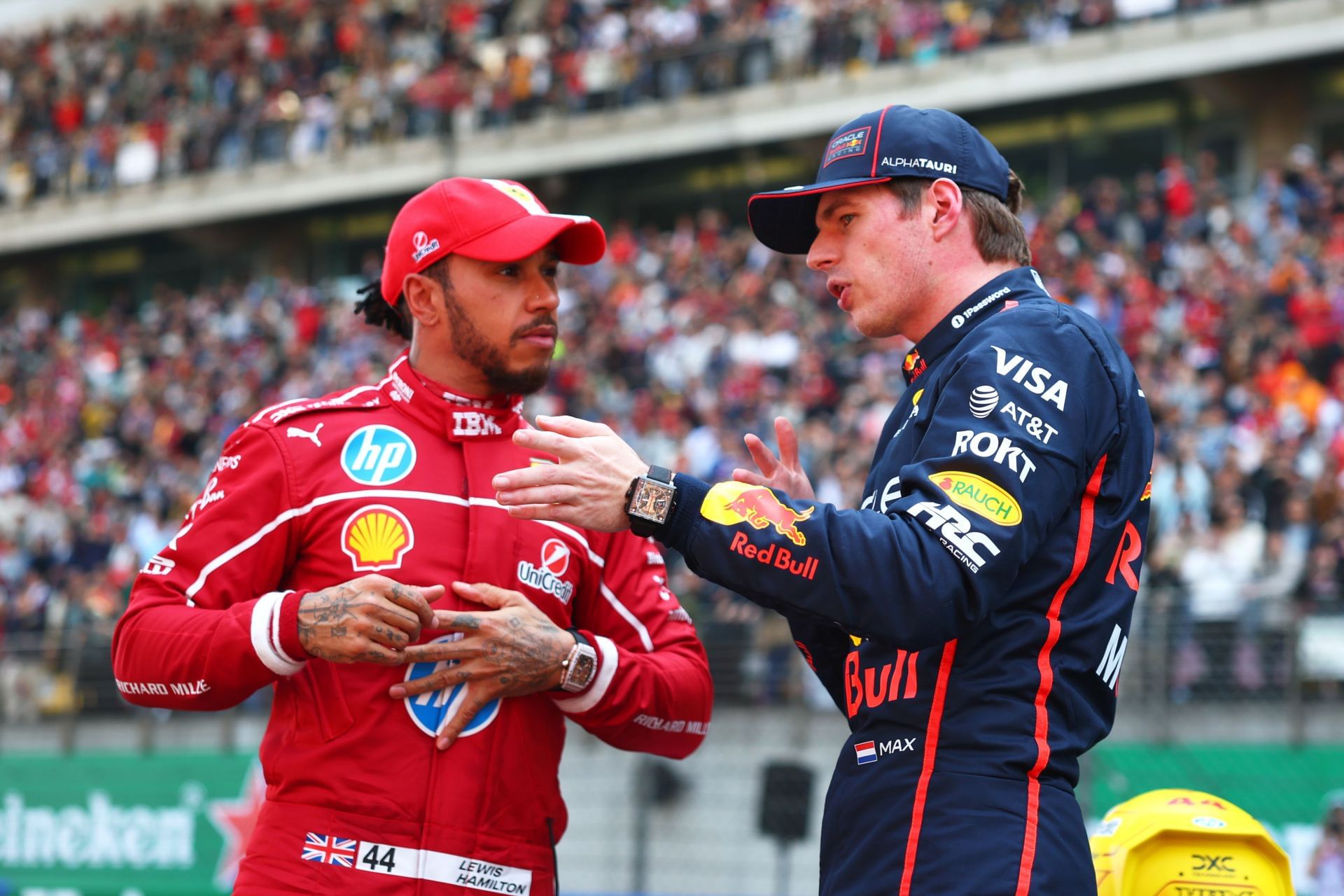Max Verstappen and Lewis Hamilton clashed wheels in a tense moment on lap 6 of the F1 Mexico Grand Prix, creating one of the key highlights of the race. At the time, Ferrari’s driver was holding P3, the position he had started from, while his Red Bull rival was just behind in P4 as they approached Turn 1.
Verstappen carried slightly too much speed into the corner as he attempted a late inside lunge to claim the podium place. The two F1 champions were wheel-to-wheel at the apex, and as they turned into the right-hander, Verstappen’s left wheels made contact with Hamilton’s right side. Although the rear wing on Hamilton’s Ferrari SF25 wobbled momentarily, neither car sustained damage.
Despite the drama, no action was taken by the stewards regarding the Turn 1 collision. The official FIA stewards’ statement clarified their reasoning:
“On lap 6, Car 1 (VER) overtook Car 44 (HAM) on the inside of Turn 1. At the apex, VER’s front axle was clearly in front of HAM’s mirror and therefore VER was entitled to the racing line. HAM remained alongside through the corner, resulting in slight contact between the wheels of both cars. The contact had no consequences for either car.
Considering that HAM had limited opportunity to leave additional space on track, that both cars were side by side throughout the corner and no sporting consequence resulted from the contact — and noting that in similar incidents in the past no further action was taken — the Stewards determined that the matter falls within a racing incident.”
The battle for P3 between Verstappen and Hamilton raged on through Turns 2, 3, 4, and 5. However, a pivotal moment arrived when the stewards issued a 10-second time penalty to Hamilton, which significantly altered the course of his race.
### The 10-Second Penalty for Lewis Hamilton: Gaining a Lasting Advantage
After the initial collision on lap 6, Hamilton rejoined the track and stayed alongside Verstappen through Turn 2. In the tight section between Turns 2 and 3 — an area notoriously difficult for overtaking — Verstappen ran out of space and cut the corner to retain position. Hamilton then gained time on the ensuing straight and took the outside line into Turn 4, with Verstappen hugging the inside.
However, in a critical error, Hamilton locked his front left tire, went off onto the grass, and cut the corner, coming out ahead of Verstappen as a result. This off-track manoeuvre allowed Hamilton to gain a “lasting advantage” by passing Verstappen off the track and failing to return the position afterward.
The FIA stewards explained their decision in another official statement regarding Hamilton’s breach of Appendix L, Chapter IV, Article 2 d) of the FIA International Sporting Code:
“The Stewards reviewed positioning/marshalling system data and video evidence. Car 44 (HAM) locked brakes, left the track at Turn 4 and used the grass area while rejoining in the direction of Turn 5. As the driver was unable to follow the route prescribed by the Race Director along the ‘yellow line’ due to excess speed, no breach of the Race Director’s Notes is deemed to have occurred.
However, by leaving the track and cutting the corner, the driver gained a lasting advantage, overtaking Car 1 (VER) and failing to give back the position thereafter. The standard penalty for leaving the track and gaining a lasting advantage is therefore imposed.”
Hamilton served the 10-second penalty during a pit stop and eventually finished the race in P8. Meanwhile, Max Verstappen capitalized on an unexpected one-stop strategy to secure a podium finish in P3.
The Mexico GP was ultimately won by Lando Norris, who now leads the drivers’ championship, adding yet more intrigue to the season as it progresses.
https://www.sportskeeda.com/f1/news-explained-why-max-verstappen-lewis-hamilton-got-away-without-penalty-collision-f1-mexican-gp


